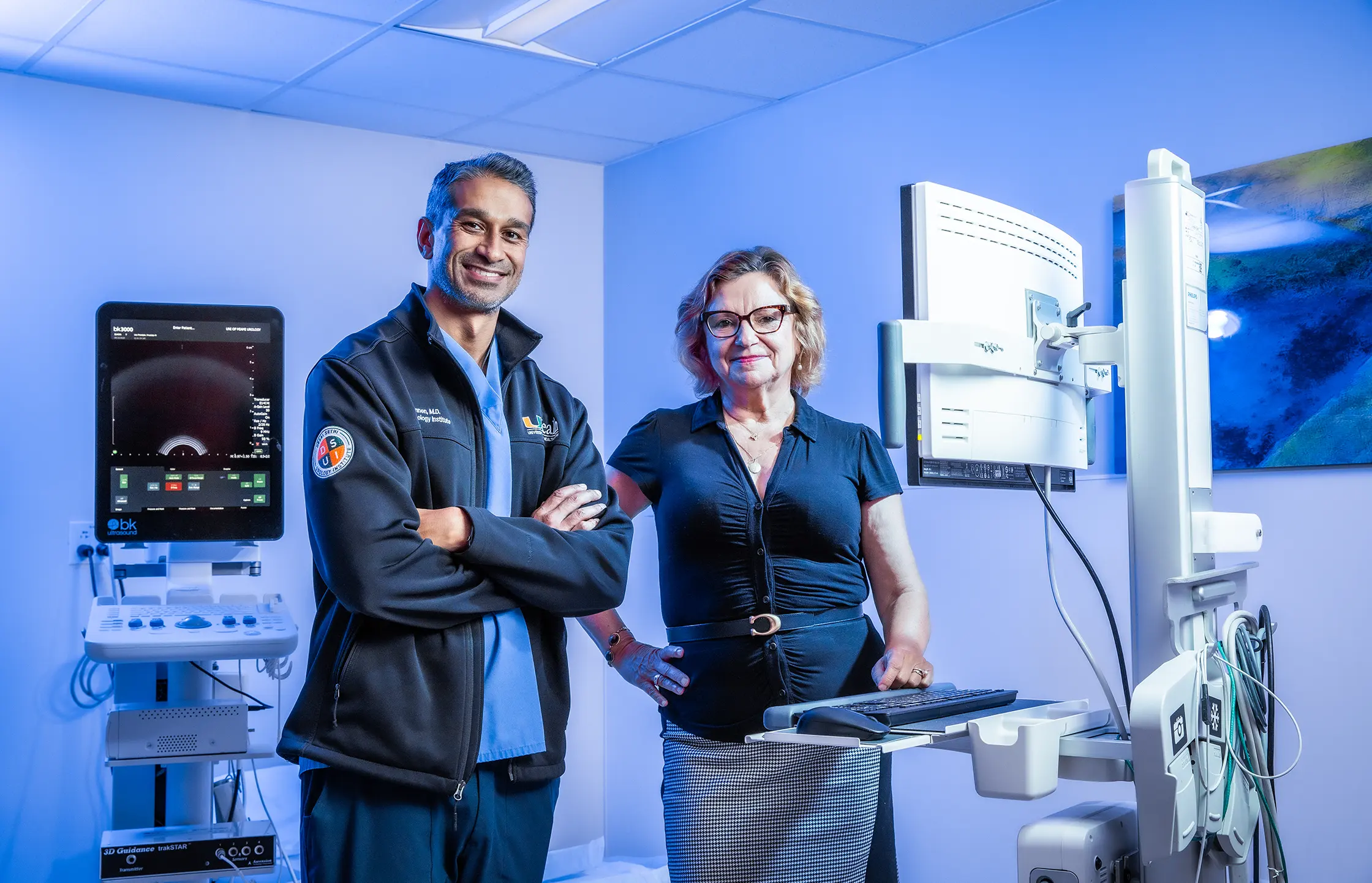Tackling Deadly Brain Tumors
Teams are using a data-driven strategy to develop new angles of attack

Antonio Iavarone, M.D. Photograph by Sonya Revell.
Researchers have spent decades trying to understand how cancers operate, and there’s still a lot to learn. Tumors disrupt cell metabolism, genomics, communication, immune response and other mechanisms. This difficulty increases even further inside the brain, which challenges most therapeutic interventions.
Aggressive brain tumors, such as glioblastoma multiforme, follow a predictable pattern. At first, they respond to therapy, but eventually they come back in new, treatment-resistant forms and are almost always fatal. On average, glioblastoma patients survive 18 months after diagnosis. Antonio Iavarone, M.D., deputy director of Sylvester Comprehensive Cancer Center and professor of neurological surgery, biochemistry and molecular biology, and his team are trying to change that.
One strategy is to fully characterize all brain tumors. Dr. Iavarone heads up Sylvester’s recently launched Brain Tumor Institute and has set up multidisciplinary teams to analyze DNA, RNA, proteins (genomics, transcriptomics, proteomics) and other molecules in surgically removed tumors to find angles of attack.
“That is why we need to increase the complexity of our tumor analysis,” Dr. Iavarone said. “If we use all the omics platforms, each one can provide important information that will help us understand that patient’s tumor and, hopefully, personalize care.”
Tackling Brain Tumors


From left, Ricardo Komotar, M.D., Macarena de la Fuente, M.D., Anna Lasorella, M.D., and Antonio Iavarone, M.D. Photograph by CLUTCH Content Partners.
Leadership of the multidisciplinary team also includes Macarena de la Fuente, M.D., co-director of clinical neuro-oncology, associate professor of neurology and chief of the Neuro-oncology Division; Ricardo Komotar, M.D., co-director of surgical neuro-oncology, professor and program director in neurosurgery and director of surgical neuro-oncology; and Anna Lasorella, M.D., director of Sylvester’s Precision Medicine Initiative, co-director of basic and translational research and professor of biochemistry and molecular biology.
One known cancer vulnerability is a rare fusion of two proteins called FGFR3-TACC3. Discovered by Dr. Iavarone’s lab, this fusion affects around 3% of glioblastoma patients. The National Cancer Institute is now sponsoring a clinical trial to test a drug that inhibits FGFR3-TACC3, and early results have been promising.
All these omics methods produce incredible amounts of data and, for this approach to work, the researchers must incorporate rigorous computer analysis.
“We have fantastic computational biologists here,” Dr. Iavarone said, “including Drs. Michele Ceccarelli, Fulvio D’Angelo and Luciano Garofano. They have extensive expertise in the analysis of the multi-omic dataset generated from brain tumor patients. This team approach is allowing us to dissect tumors down to the single-cell level. We can see which cells are present in the tumor microenvironment and how they crosstalk with actual tumor cells. The more we understand that complexity, the more we can identify variations like FGFR3-TACC3 and target them.”
University of Miami Medicine
FALL 2025













